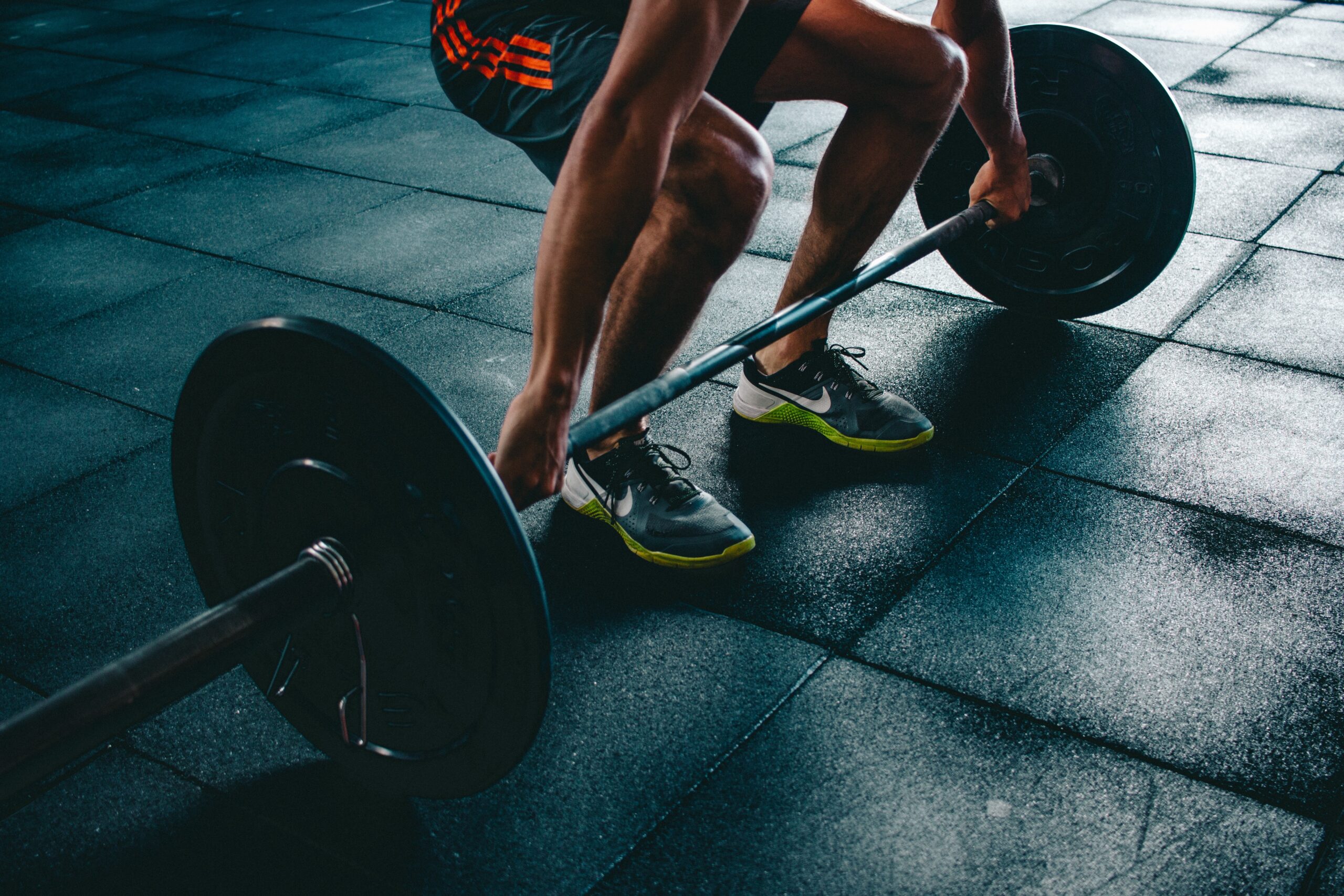High-intensity interval training (HIIT) has become popular because of its effectiveness in improving endurance, boosting heart health and burning fat faster compared to cardio. You may think HIIT is a cardio workout for getting quick results.
But what about building and maintaining muscles?
Can HIIT workout make use of weight resistance to improve your strength training to ultimately help your cycling?

Incorporating weights in your HIIT workouts can be the most effective way to improve your heart health and maximize the burning of fat. Remember, when using weights to do HIIT, safety is necessary. You should also switch up your routine every few months and consider not using weights daily in your HIIT training.
What is HIIT?
High-intensity interval training is a type of interval training that involves exercises at a high intensity, alternating with recovery. Typically, it is known as cardiovascular exercise, which relates to heart health.
The high-intensity part of a HIIT workout can last from 30 seconds to 5 minutes and can be done for 5 to 8 rounds.The goal of the intense part of the workout is for your body to meet the highest effort it can safely take. This enables your body to burn fat without oxygen in an anaerobic state.

Benefits of Using Weights in HIIT
On its own, a HIIT workout has great benefits.

However, adding weights to HIIT can take your workout to another level, as you take a shorter time to work your full body to its max capacity.
Using weights for HIIT workouts can improve heart health, build muscle, and burn calories as well as fat during and after the training.
The following are the benefits of adding weights to your HIIT training:
- Burn more calories
Adding weights to HIIT allows for burning of calories beyond the time you are breathing and breaking a sweat.
This is known as EPOC (excess post-exercise oxygen consumption), which is the amount of oxygen your body needs to be restored to its state of resting.
During HIIT workouts, your body is in a state of shock and it takes extra energy and time to repair muscles, regulate hormones and replenish energy stores. Training that involves heavy resistance done with short intervals maximizes the EPOC effect, compared to circuit weight training and aerobic cycling.
- Keep muscle while losing fat
If your workouts are only cardio without strength training, you are most likely to lose both muscle and fat. A lot of cardio can result in the loss of lean muscle mass which potentially slows down metabolism, especially if you are on calorie restriction.
A study was done by the Journal of Obesity, comparing individuals who did strength training to those who did aerobic exercise. For 18 months, the dieters who incorporated strength training 4 times weekly lost more fat.
- Increases health benefits
Strength training and cardio workouts are amazing for heart health. Both of these exercises can help reduce blood pressure, promote circulation, reduce triglyceride levels, and increase HDL, the ‘good’ cholesterol.
Generally, a healthy workout routine should include balance, strength, endurance, and flexibility. Doing strength training at least two times in a week can boost metabolism, protect the body from injury, improve bone strength and provide muscles with the ability to do day to day activities.
Adding resistance training to your HIIT workout can significantly reduce lipoprotein, ‘bad’ cholesterol as well as blood pressure, in addition to lowering the body-fat percentage.
- Faster workout
Apart from improving muscular fitness, resistance training requires less time.
You can easily add HIIT training to your busy schedule since it is done intensely for a shorter time. For example, it is manageable to plan a 20 to 30-minute HIIT training than a walk or run that is an hour long.
Incorporating weight training to your HIIT workout can save you time by adding in strength exercise as well. Also, when you know that you are exercising for a shorter time, you are likely to be more motivated.
Types of HIIT with Weights
Strength training focuses on building muscle while HIIT workout focuses on working the cardiovascular. You can achieve HIIT training with weights in different ways. You can add cardio in between strength training, compound exercise or lift heavy weights while taking shorter rests.

This is explained below:
- Cardio in between strength training
Add intervals of cardiovascular workouts in between each set of your standard strength training routine. These exercises can be running in place, jumping rope or jumping jacks. You can alternate between cardio and strength or take a quick break of 20-30 seconds.
For example, alternate between 2 minutes of chest exercise of your choice and 30 seconds of fast running in place.
- Compound exercise
These are those workouts that work various groups of muscles at the same time. Since your heart rate is elevated and most of your muscles are working, you can easily reach that maximum effort.
This can be combining two exercises into one movement such as lunge with a bicep curl, squat with overhead press and deadlift with triceps kickback or doing one type of exercise that works the various muscle groups such as push-up, lunge, deadlight and squat.
For example: squat with weights and do an overhead press as you lift back up.
- Lift heavier
You can get quicker gains by lifting heavier weights over the course of your workout. Studies showed that trained individuals that lifted heavier weights fewer repetitions thrice in a week, maximized their strength adaptation compared to those individuals, who lifted lighter weights more times over the same period.
When lifting weights, focus on taking shorter breaks and pushing closer to your level of fatigue.
For example, do a training split for full body.
What to Consider When Doing HIIT with Weights

The success of adding weights to your HIIT depends on doing it effectively and safely. You do not want to injure yourself while pushing yourself. Consult with your medical provider or physician before starting any workout regimen, especially one that is more intense to your body.
Consider the following:
- Safety first
For any exercise program you follow, it is important to focus on time-efficiency, effectiveness and safety. You are more likely to get injured if you are adding weights to your HIIT workouts or using heavier weights.
Try as much as possible to focus on your body alignment and being present when working out. The following tips will help in adding weights to your HIIT safely:
- Warm-up—this prepares the mind and the muscles for the upcoming exercise.
- Ensure that your form is right by moving smoothly through an exercise and aligning your body properly. Bad form can lead to slow gains and injuries.
- If you are new to strength training, start with lighter weights and move your way up.
- Should not be done daily
HIIT workout can be effective but also can cause stress to your body. During HIIT training your lungs, heart and muscles use 85-95% of oxygen. This increases the release of stress hormones including cortisol and adrenaline.
This could potentially weaken your immune system making it easier for you to get sick. Ensure that you do HIIT exercise 2 to 4 times in a week, to give time for your body to repair muscles and replenish the energy stores. For maximum recovery, hydrate adequately and have nutrition for pre and post-workout.
- Change it up every few months
To see results and make gains with HIIT workouts, you need to slowly increase your intensity with time. This is because your body can easily adapt to the workouts and when you notice that the exercises are no longer challenging, it is time to switch it up.
Follow the following FITT principle to change your workout every six months:
- Frequency – How often do you do your workouts? If you normally do once a week, step it up to two times per week.
- Intensity – How hard do you exercise? Add a couple of pounds to your weights.
- Time – Duration of your exercise. Increase your time of doing the high-intensity part of your exercise, say from 20 seconds to 25 seconds.
- Type – The mode or format of the exercise. For example, add a longer walk to your weekly routine as an endurance exercise.
- You will get what you put in
Always aim to reach that uncomfortable place where you are sweating like a pig, almost gasping for air, your heart is beating faster and your legs are burning. This is the point where true change will occur.
Final Thoughts
Adding weights to your high-intensity interval training can improve your overall health, help you build muscle and burn fat faster. However, it can take you some time to successfully combine weights with HIIT because it can be very challenging.
Give some time for your body to adapt if you are new to HIIT. It is totally fine, to begin with standard cardio then add weights as you work your way up. While respecting your body, push yourself outside your comfort zone and always listen to your body.
Give time for your body to recover to avoid injuries. If you are not sure whether you should add weights to your HIIT regimen, seek advice from your doctor.